|
GENERAL INFORMATION ON SHIITAKE MUSHROOMS
The two most popular mushrooms in the world
are the common button mushroom (Agaricus species)
and the shiitake or black forest mushroom (Lentinus
edodes). The shiitake, meaning "mushroom of
the shii or oak tree" in Japanese, is highly
prized in the Orient for its flavor and reputed
medicinal value.
Shiitake
are native to China but have been grown in both
Japan and China since prehistoric times. They
have been cultivated for over 1000 years; the
first written record of shiitake cultivation
can be traced to Wu Sang Kwuang, born during
the Song Dynasty (AD 960–1127). However, some
documents record the uncultivated mushroom being
eaten as early as AD 199. During the Ming Dynasty
(AD 1368–1644), physician Wu Juei wrote that
the mushroom could be used not only as a food
but was taken as a remedy for upper respiratory
diseases, poor blood circulation, liver trouble,
exhaustion and weakness, and to boost qi, or
life energy. It was also believed to prevent
premature aging.
CULTIVATION OF THE SHIITAKE MUSHROOM
Before
1982 the Japanese variety of these mushrooms
could only be grown in traditional locations
using ancient methods. In the late 1970s, Gary
F. Leatham published a doctoral thesis based
on his research on the budding and growth of
the Japan Islands variety; the work helped make
commercial cultivation possible worldwide, and
Dr. Leatham is now known in the industry as
the "Father of Shiitake farming in the USA."
DRIED SHIITAKE MUSHROOMS
Shiitake
are often dried and sold as preserved food in
packages. These must be rehydrated by soaking
in water before using. Many people prefer dried
shiitake to fresh, considering that the sun-drying
process draws out the umami flavour from
the dried mushrooms by breaking down proteins
into amino acids and transforms ergosterol to
vitamin D. The stems of shiitake are rarely
used in Japanese and other cuisine's, primarily
because the stems are harder and take longer
to cook than the soft fleshy caps. But using
the stems in stocks will greatly enhance the
broth.
HEALTH
BENEFITS OF SHIITAKE MUSHROOMS
| 1)
Significantly Lowers Cholesterol -- Eritadenine |
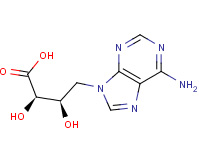 |
Several animal studies conducted
over the last ten years have shown that another
active component in shiitake mushrooms called
eritadenine lowers cholesterol levels.
Eritadenine supplementation (50 mg/kg diet)
significantly decreased the plasma total
cholesterol concentration, irrespective
of dietary fat sources, and without change in
the order of plasma cholesterol concentration
among the fat groups(See Reference 9)
Note: Both L and D-Eritadenine
(DEA) are inhibitors of S-adenosylhomocysteine
(AdoHcy) hydrolase.(See
full text).. Could there be possible anti-viral
properties here?
| 2)
Anti-Tumor Properties -- Lentinan |
|
Shiitake mushrooms have been researched
for their medicinal benefits, most notably their
anti-tumor properties in laboratory mice. These
studies have also identified the polysaccharide
lentinan, a (1-3) ß-D-glucan, as the
active compound responsible for the anti-tumor
effects.[1].Lentinan is an approved drug in
Japan. It is generally administered by injection
and has been used as an agent to prolong survival
of patients in conventional cancer therapy as
well as in AIDS research. Lentinan is one of
the host-mediated anticancer drugs which has
been shown to affect host defense immune systems.[10]
The speculative anticancer properties
of shitake mushrooms are thought to be linked
to upregulation of the immune system. An in
vitro study supports this idea, by showing a
chemical in shittake could activate various
components of the immune system, including Nk
cells. T cells, macrophages, and interleukin-6.[2]
In an experiment with human colon cancer cells,
shiitake exhibited strong anti-cancer properties.[3.
] Immune system enhancement may not be the only
possible anticancer mechanism of shiitake. An
in vitro study revealed shittake could induce
selective apoptosis in murine melanoma cells.[4]
Extracts from shiitake mushrooms (such as ichtyol)
have also been researched for many other immunological
benefits, ranging from anti-viral properties
to possible treatments for severe allergies,
as well as arthritis.[5]
| 3)
Inhibits Platelet Aggregation-- Promising
Treatment for Thrombosis-- Lenthionine |
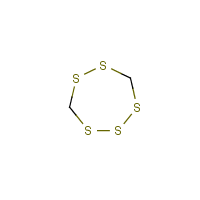 |
Lenthionine, a key flavour
compound of shiitake, also inhibits platelet
aggregation, so it is a promising treatment
for thrombosis.[6] Active Hexose Correlated
Compound (AHCC) is an alpha glucan rich nutritional
supplement produced from the mycelia of Lentinula
edodes of the basidiomycete family of mushrooms.[7]
The immunological effect of AHCC has been studied
in a double-blind, placebo-controlled study
with 21 healthy volunteers.[8] The AHCC group
showed a significantly higher number of total
dendritic cells compared with baseline, a significantly
higher number of DC1 cells compared with baseline,
a significantly higher number of DC2 cells compared
with controls, and a significantly increased
mixed-leukocyte reaction compared with controls.
There was no significant difference in cytokine
production, NK cell activity or other immune
function parameters between the two groups.
Shiitake are also one of a few known natural
sources of vegan and kosher vitamin D (vitamin
D2).
| 4)
Antioxidant Properties --L-ergothioneine |
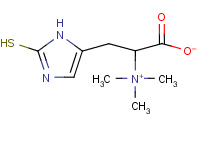 |
L-ergothioneine, a powerful
antioxidant, has also been discovered in shiitake
mushrooms--containing roughly 13 mg per 3 oz
serving. Shiitakes have 40x the amount of ergothioneine
than wheat germ.
| 5)
Source of Ergocalciferol--Vitamin D2 |
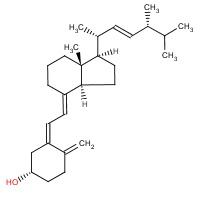 |
Shiitake mushrooms are also a
source of Vitamin D. A single 100g serving of
Shiitakes contain 96IU or 24% of you required
daily intake of Vitamin D (based on a requirement
of 400IU).
WHY
ARE SUN DRIED SHIITAKE MUSHROOMS RICHER IN FLAVOR?
When
Shitake mushrooms and similar mushrooms e.g.,
Porcini mushrooms are dried in the sun complex
proteins are broken down into simpler amino
acids (e.g., glutamate) yielding a stronger
Umami Flavor. In addition when mushrooms
are dried, their guanylate (nucleotide) which
also contributes to Umami flavor increases.
Read more about Umami
as the 5th taste.
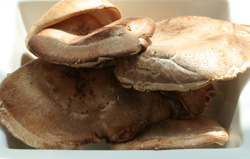 |
|
FRESH SHIITAKE MUSHROOMS |
| |
|
|
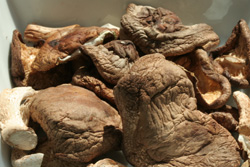
|
|
DRIED SHIITAKE MUSHROOMS --
Dried Shiitake Mushrooms
are richer in flavor than fresh mushrooms;
complex proteins are broken down to simpler
amino acids (e.g., glutamate) yielding
a stronger Umami taste. Sun Dried Shiitake
mushrooms increases Vitamin D.
|
References
1 -- Kim H, Kacew S, Lee B (1999).
"In vitro chemopreventive effects of plant polysaccharides
(Aloe barbadensis miller, Lentinus edodes, Ganoderma
lucidum and Coriolus versicolor)". Carcinogenesis
20 (8): 1637–40.
2 -- Yamamoto Y, Shirono H, Kono
K, Ohashi Y. (Nov 1997), "Immunopotentiating
activity of the water-soluble lignin rich fraction
prepared from LEM--the extract of the solid
culture medium of Lentinus edodes mycelia.",
Biosci Biotechnol Biochem. 61 (11): 1909–12.
3 -- Ng ML, Yap AT (2002), "Inhibition
of human colon carcinoma development by lentinan
from shiitake mushrooms (Lentinus edodes).",
J Altern Complement Med. 8 (5): 581–9.
4 -- Gu YH, Belury MA. (Mar 2005),
"Selective induction of apoptosis in murine
skin carcinoma cells (CH72) by an ethanol extract
of Lentinula edodes.", Cancer Lett. 220 (1):
21–8.
5 -- Takehara M, Kuida K, Mori
K (1979). "Antiviral activity of virus-like
particles from Lentinus edodes (Shiitake)".
Archives of Virology 59 (3): 269–74.
6 -- Shimada S, Komamura K, Kumagai
H, Sakurai H (2004). "Inhibitory activity of
shiitake flavor against platelet aggregation".
Biofactors 22 (1-4): 177–9.
7 -- Spierings EL, Fujii H, Sun
B et al. (2007). A Phase I study of the safety
of the nutritional supplement, active hexose
correlated compound, AHCC, in healthy volunteers.
J Nutr Sci Vitaminol. 53:536-539.
8 -- Terakawa N, Matsui Y, Satoi
S et al. (2008). Immunological effect of active
hexose correlated compound (AHCC) in healthy
volunteers: a double-blind, placebo-controlled
study. Nutr Cancer. 60:643-651
9 --Dietary Eritadenine Modifies
Plasma Phosphatidylcholine Molecular Species
Profile in Rats Fed Different Types of Fat Manuscript
received 20 May 1996. Initial reviews completed
24 June 1996. Revision accepted 14 November
1996. Kimio Sugiyama, Akihiro Yamakawa, Hirokazu
Kawagishi, and Shigeru Saeki*-- Read
Full Text
10 --Nakano H, Namatame K, Nemoto
H, Motohashi H, Nishiyama K, Kumada K (1999).
"A multi-institutional prospective study of
lentinan in advanced gastric cancer patients
with unresectable and recurrent diseases: effect
on prolongation of survival and improvement
of quality of life. Kanagawa Lentinan Research
Group". Hepatogastroenterology 46 (28): 2662–8
Further Reading
Processing
Shitake
Worlds
Healthiest Foods
Supporting
Small Farm Success with Shiitakes
|
RECIPES
WITH SHITAKE MUSHROOMS
|
Science Behind
Food and Cooking
in the Kitchen
|
| |
 |
|
|
|
|
|
|
|
|
|
|
|

